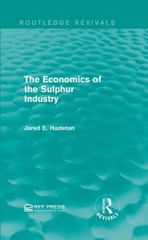Problem 1 In the NYC market for cab services the demand for cab rides is given by: Q\" = 120 20F, where P is the price per mile, and Q is the total length of cab rides over a month (in thousands of miles). The supply is givenby Q5 = BOP 30. a. Graph the demand and supply by placing P on the vertical axis (the y-axis) and Q on the horizontal axis (the x-axis). Indicate the choke price, the Q-intercept for demand, and the Pintercept of the supply curve. b. What are the equilibrium price and quantity? Identify the equilibrium in the graph of part (a). c. If the government sets a maximum price of P=2, would there be excess supply (surplus) or excess demand (shortage), or none (equilibrium)? How much is excess supply or demand, if any? [Hint: compare the demand at this price with the supply at this price] Problem 2 The monthly demand for root canal treatments in some city is given by Qd = 18 2P, where Q is measured in thousands of treatments and P is the price (in thousands of dollars). The supply is given by Q5 = 12. a. Draw the supply and demand for root-canal treatments in this city, where Q is on the x- axis and P is on the y-axis. Show the choke price, the Qintercept of demand, and the P- intercept of supply (is there any?) b. What are the equilibrium price and quantity of root canal treatments? Show that on your graph from (a) c. As you have seen. the supply of root canal treatments was xed (not a function of P): the reason for that is that the number of specialized dentists who offer that treatment (endodontists) is fixed at any point in time - and it takes time to train a new endodontist. Due to a new cohort of graduating endodonsts in the city, the supply curve became: QS = 14. Is the price of root canal treatment expected to increase or decrease? What are the new equilibrium price and quantity of root canal treatments? Show that in your graph above. Problem 3 The inverse demand for Khachapuri (traditional Georgian dish of cheese-filled bread) is given by P = 120 - Qd, where Qd is measured in thousands of units per week, and P is the price of one unit in GEL (Georgian Lari, the Georgian currency). The inverse supply is given by P = 20 + 2Qs. a. Graph the inverse supply and inverse demand curves, with P on the vertical axis and Q on the horizontal axis. b. What are the buyers' choke price and the sellers' shutdown price in the graph? Find those choke prices by looking at the inverse supply and demand equations. Also find the Q-intercept of demand. c. In equilibrium Qd = Qs. Using the inverse-demand and inverse-supply functions above, derive the respective demand and supply functions (Q and Qs each as a function of P). Impose the condition of Qd = Qs to find the equilibrium price and quantity of Khachapuri. First find P*, then plug this back into the Q (or the Qs) equation to find the equilibrium quantity Q*








